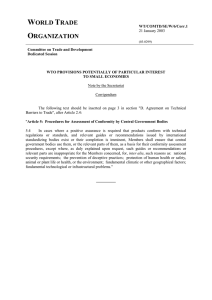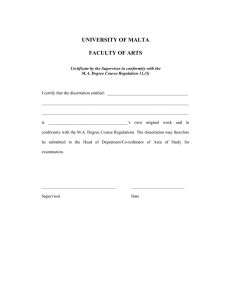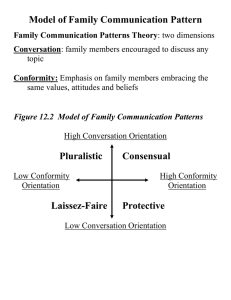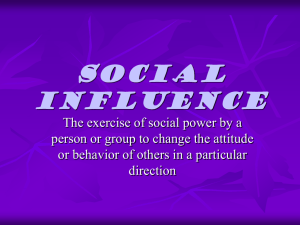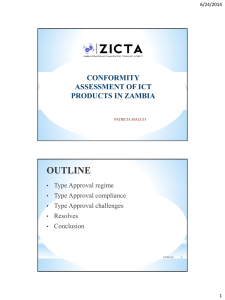Mr. Pettit Name: Modern America
advertisement
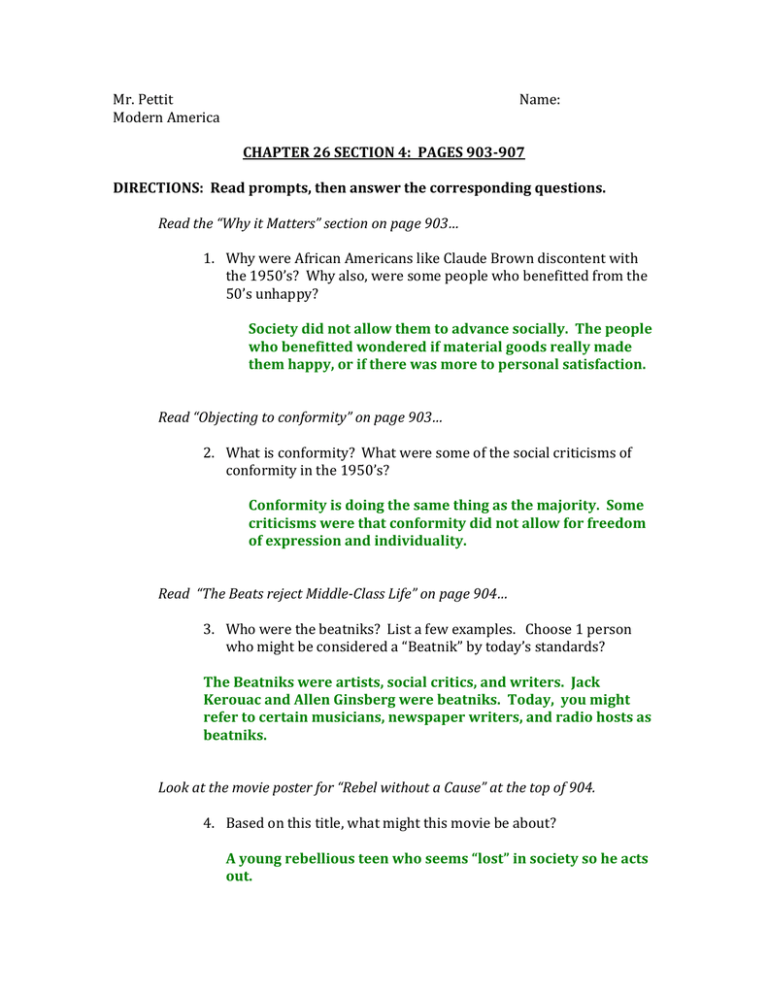
Mr. Pettit Modern America Name: CHAPTER 26 SECTION 4: PAGES 903-907 DIRECTIONS: Read prompts, then answer the corresponding questions. Read the “Why it Matters” section on page 903… 1. Why were African Americans like Claude Brown discontent with the 1950’s? Why also, were some people who benefitted from the 50’s unhappy? Society did not allow them to advance socially. The people who benefitted wondered if material goods really made them happy, or if there was more to personal satisfaction. Read “Objecting to conformity” on page 903… 2. What is conformity? What were some of the social criticisms of conformity in the 1950’s? Conformity is doing the same thing as the majority. Some criticisms were that conformity did not allow for freedom of expression and individuality. Read “The Beats reject Middle-Class Life” on page 904… 3. Who were the beatniks? List a few examples. Choose 1 person who might be considered a “Beatnik” by today’s standards? The Beatniks were artists, social critics, and writers. Jack Kerouac and Allen Ginsberg were beatniks. Today, you might refer to certain musicians, newspaper writers, and radio hosts as beatniks. Look at the movie poster for “Rebel without a Cause” at the top of 904. 4. Based on this title, what might this movie be about? A young rebellious teen who seems “lost” in society so he acts out. Read the section titled “Cities Suffer a Decline” on pages 904 and 905… 5. How did the loss of the middle class from cities hurt the city both economically and politically? The middle class is large and productive, therefore the job market was impacted, and motivation to keep neighborhoods safe and clean starting lacking when the middle class began to leave the city for the suburbs. 6. What were urban renewal projects? Why might you make the argument that the intentions of Urban Renewal were good, however the results turned out bad? They were government funded programs to fix housing, fight pollution and crime, and stimulate inner-city economies. The results turned out not so great, because often projects ran out of money or were influenced by the same negative factors that created the inner city problems to begin with. Look at the photographs at the bottom of page 905… 6. Which unit from earlier in our course reminds you of these tenements? Immigration! Read the section titled “Other Americans” Face Injustice on pages 906-907… 7. Describe the experiences of each of the 3 groups mentioned. Puerto Ricans: Mexicans: Native Americans: CONCLUSIONS: In the fifties, many middle class americans were unaware of poverty in their country. Do you think the same can be true today? Explain.



